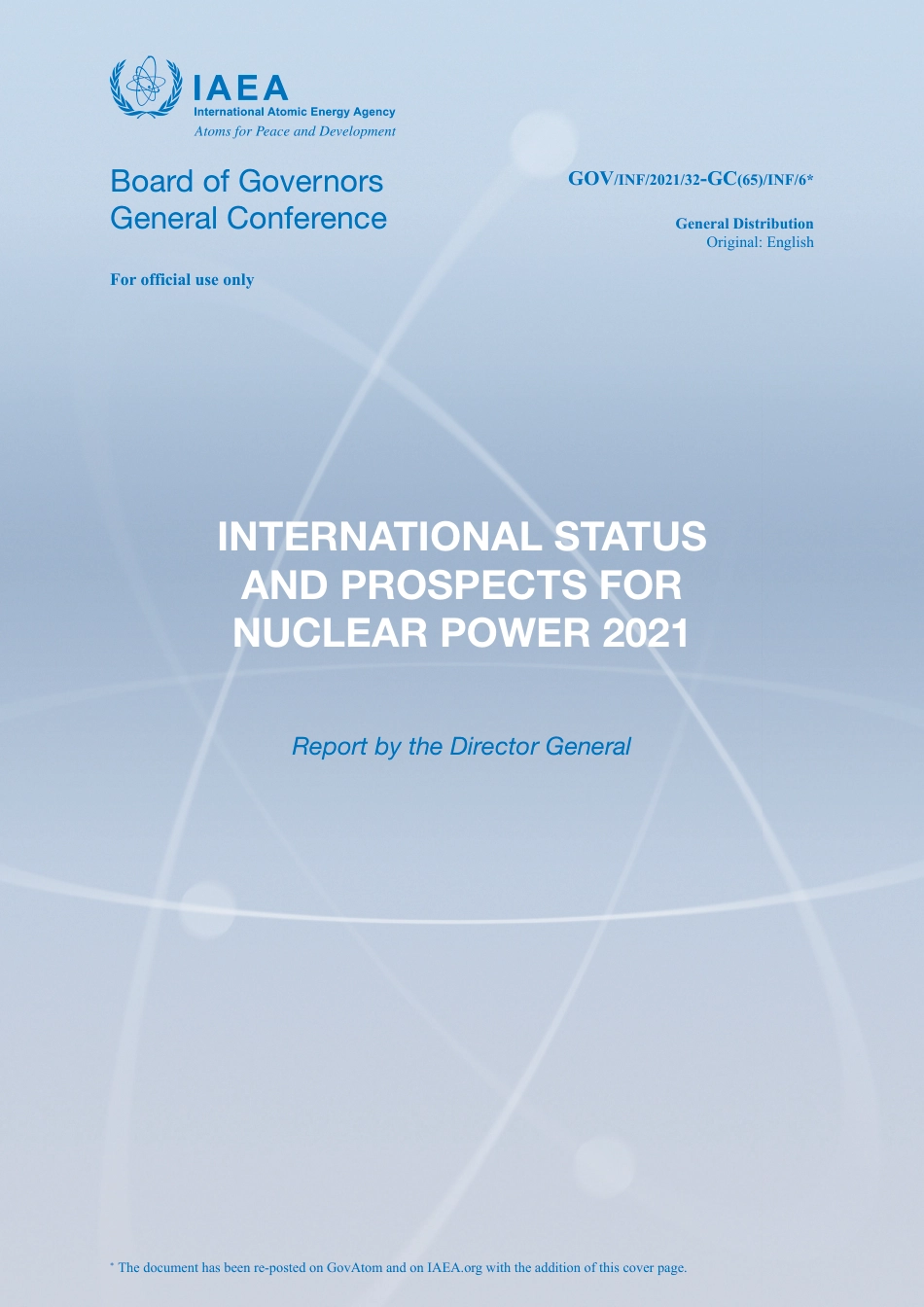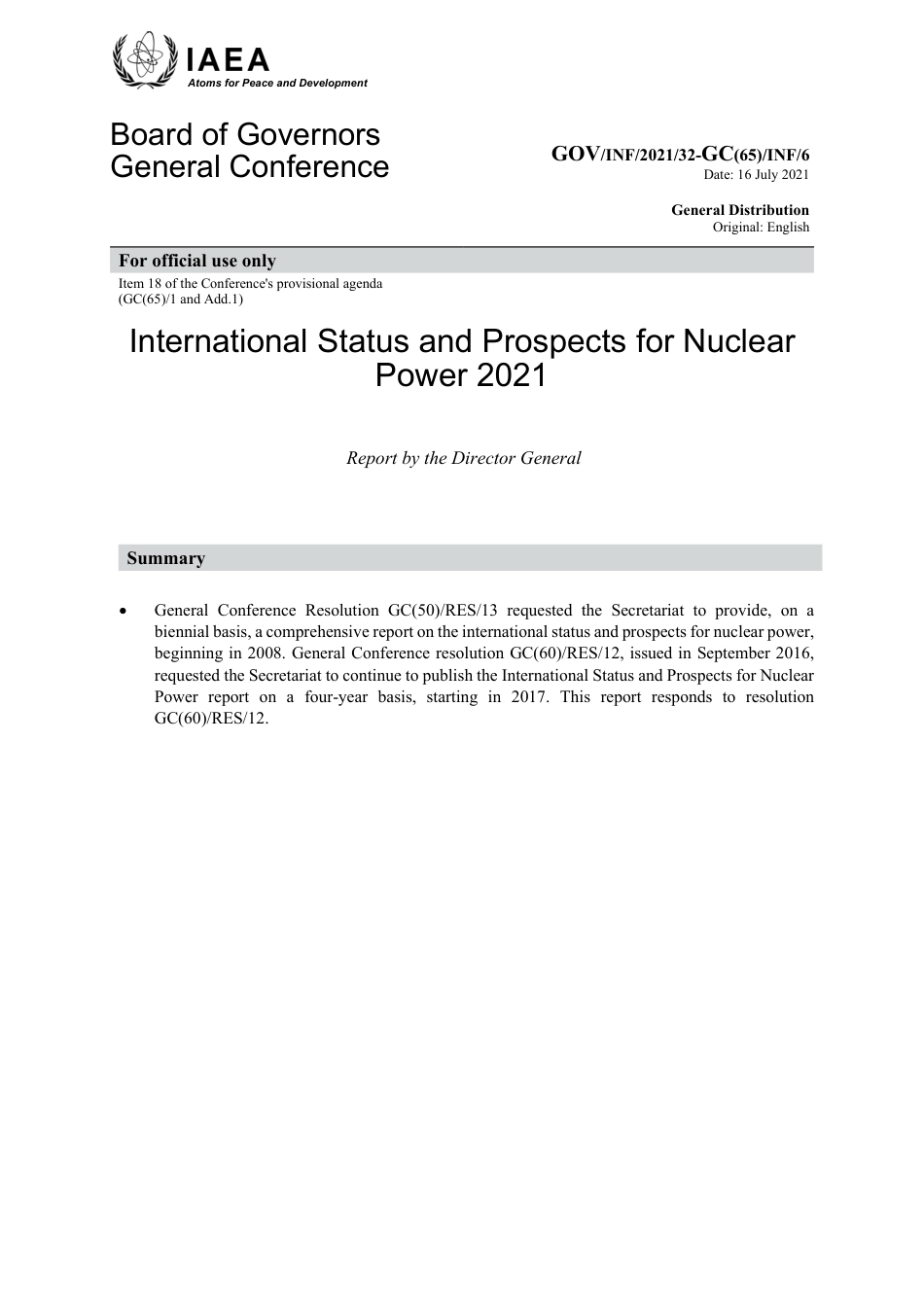Report by the Director GeneralBoard of GovernorsGeneral ConferenceGOV/INF/2021/32-GC(65)/INF/6*General DistributionOriginal: EnglishFor official use only* The document has been re-posted on GovAtom and on IAEA.org with the addition of this cover page.INTERNATIONAL STATUS AND PROSPECTS FOR NUCLEAR POWER 2021 Board of Governors General Conference GOV/INF/2021/32-GC(65)/INF/6 Date: 16 July 2021 General Distribution Original: English For official use only Item 18 of the Conference's provisional agenda (GC(65)/1 and Add.1) International Status and Prospects for Nuclear Power 2021 Report by the Director General Summary • General Conference Resolution GC(50)/RES/13 requested the Secretariat to provide, on a biennial basis, a comprehensive report on the international status and prospects for nuclear power, beginning in 2008. General Conference resolution GC(60)/RES/12, issued in September 2016, requested the Secretariat to continue to publish the International Status and Prospects for Nuclear Power report on a four-year basis, starting in 2017. This report responds to resolution GC(60)/RES/12. Atoms for Peace and Development GOV/INF/2021/32-GC(65)/INF/6 Page 1 International Status and Prospects for Nuclear Power 2021 Report by the Director General A. Clean energy for Climate and Development: Socioeconomic Context A.1. The Evolving Context 1. There have been significant national and international developments underscoring the role of nuclear power in mitigating climate change and achieving sustainable development since International Status and Prospects for Nuclear Power 2017 (document GOV/INF/2017/12-GC (61)/INF/8) was issued. This section highlights some of the most important developments affecting the status and prospects for nuclear power....



